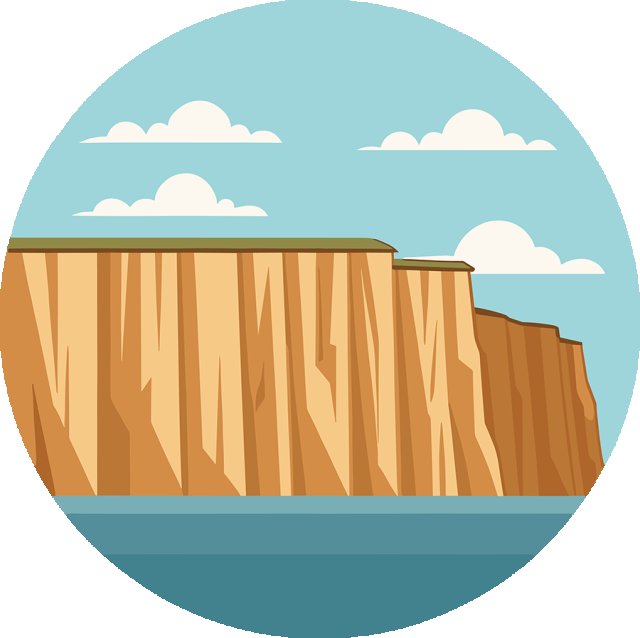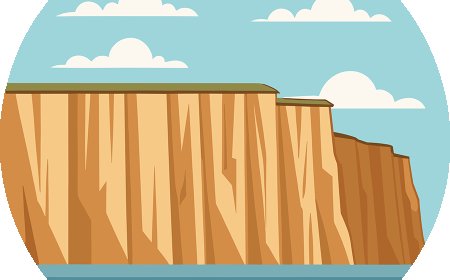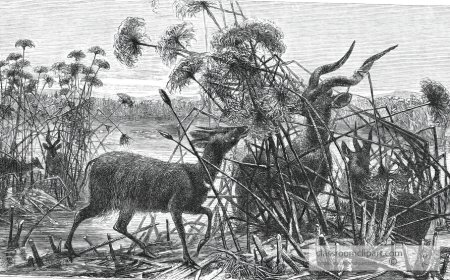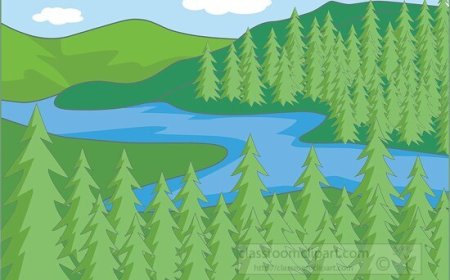Cliffs for Kids: Fun Facts, Famous Cliffs, and How Cliffs Form | Academic Kids
Explore this kid-friendly guide to cliffs! Learn how cliffs form, discover famous cliffs around the world, and find fun facts perfect for student research and school projects.

🪨🌊 Cliffs: Nature’s Towering Landforms
🌼 Introduction
Cliffs are tall, steep faces of rock or earth that rise sharply from the ground or water below. These dramatic landforms are found all over the world, from rocky coastlines to desert canyons. Cliffs can be formed by powerful natural forces like erosion, tectonic movement, and weathering. Because cliffs are so striking, they often become famous landmarks and important habitats for plants and animals.
🌍 What Are Cliffs?
A cliff is a high, steep slope that can drop straight down or angle steeply. Some cliffs rise hundreds or even thousands of feet. Cliffs can be made of rock, ice, or earth. They often form along coastlines, mountain ranges, river valleys, and deserts. Cliffs are usually created by erosion, which means the wearing away of rocks by wind, rain, and waves.
Key features of cliffs:
- Steep face – The side of the cliff can be nearly vertical.
- Edge or crest – The top of the cliff where the land flattens.
- Base or foot – The bottom, where rocks and debris collect.
🪨 How Do Cliffs Form?
Cliffs form in many ways over millions of years. Some of the most common processes include:
- Erosion: Water, wind, and ice wear away softer rock layers, leaving harder rock standing tall.
- Tectonic activity: Movements of the Earth’s crust can push up rock layers to create cliffs and mountains.
- Glacial carving: Glaciers scrape away land and leave steep valley walls.
- Weathering: Rain, snow, and temperature changes break rock into smaller pieces.
For example, along a coastline, waves crash against rock, slowly cutting away at the land until a cliff forms.
🌊 Famous Cliffs Around the World
Many cliffs are well-known because of their beauty or height. Here are a few examples:
- Cliffs of Moher (Ireland): Towering cliffs along the Atlantic Ocean rising up to 214 meters (702 feet).
- El Capitan (Yosemite, USA): A giant granite cliff loved by rock climbers.
- Preikestolen (Norway): Also called Pulpit Rock, this flat-topped cliff overlooks a fjord.
- White Cliffs of Dover (England): Famous white chalk cliffs facing the English Channel.
- Kalaupapa Cliffs (Hawaii): Some of the tallest sea cliffs in the world, reaching over 1,000 meters (3,280 feet).
🌿 Plants and Animals on Cliffs
Even though cliffs look harsh, many living things survive there. Plants that grow on cliffs are adapted to strong winds and little soil. Birds often build nests on cliff ledges where predators can’t reach them.
Examples of life on cliffs:
- Birds like falcons, eagles, puffins, and gulls.
- Plants like lichens, mosses, and hardy grasses.
- Small mammals that hide in rocky cracks.
- Insects adapted to rocky environments.
These ecosystems are fragile and can be harmed by pollution or too much human activity.
🌦️ Why Are Cliffs Important?
Cliffs matter for many reasons:
- Habitat: They provide homes for unique plants and animals.
- Erosion control: Cliffs help shape coastlines and protect inland areas.
- Tourism: Beautiful cliffs attract visitors and support local economies.
- Cultural value: Some cliffs are important in history and mythology.
🛑 Dangers and Safety Around Cliffs
While cliffs are beautiful, they can also be dangerous. The edges are often unstable, and falling rocks or sudden drops can hurt people. It is important to follow safety signs, stay behind barriers, and keep a safe distance from the edge.
✨ Interesting Facts About Cliffs
- The world’s highest sea cliffs are in Hawaii.
- Some cliffs are made of chalk, a type of limestone.
- El Capitan is taller than the Empire State Building.
- Cliffs can form underwater as well as on land.
- Ancient people often used cliff caves for shelter.
- Cliffs can erode by several centimeters each year.
- Many birds choose cliffs to nest because predators can’t climb up.
📝 Kid-Friendly Summary
Cliffs are tall, steep slopes of rock or earth. They form when wind, water, ice, and tectonic movements shape the land. Cliffs can be found along oceans, in mountains, and in deserts. Even though cliffs look harsh, they are home to many plants and animals. Famous cliffs like the Cliffs of Moher and El Capitan show how powerful nature can be. If you visit a cliff, always be careful and stay a safe distance from the edge.
🧠 Vocabulary Words
| Word | Definition |
|---|---|
| Cliff | A tall, steep face of rock or earth. |
| Erosion | The process of wearing away rock by water, wind, or ice. |
| Tectonic | Related to the movement of Earth's plates. |
| Weathering | The breaking down of rock by rain, ice, and temperature changes. |
| Ledge | A narrow shelf of rock on the side of a cliff. |
| Crest | The top edge of a cliff or hill. |
| Debris | Broken pieces of rock or material that collect at the base. |
| Glacier | A large mass of moving ice that shapes the land. |
| Habitat | The place where an animal or plant lives. |
| Fjord | A deep, narrow sea inlet with steep cliffs formed by glaciers. |




















































